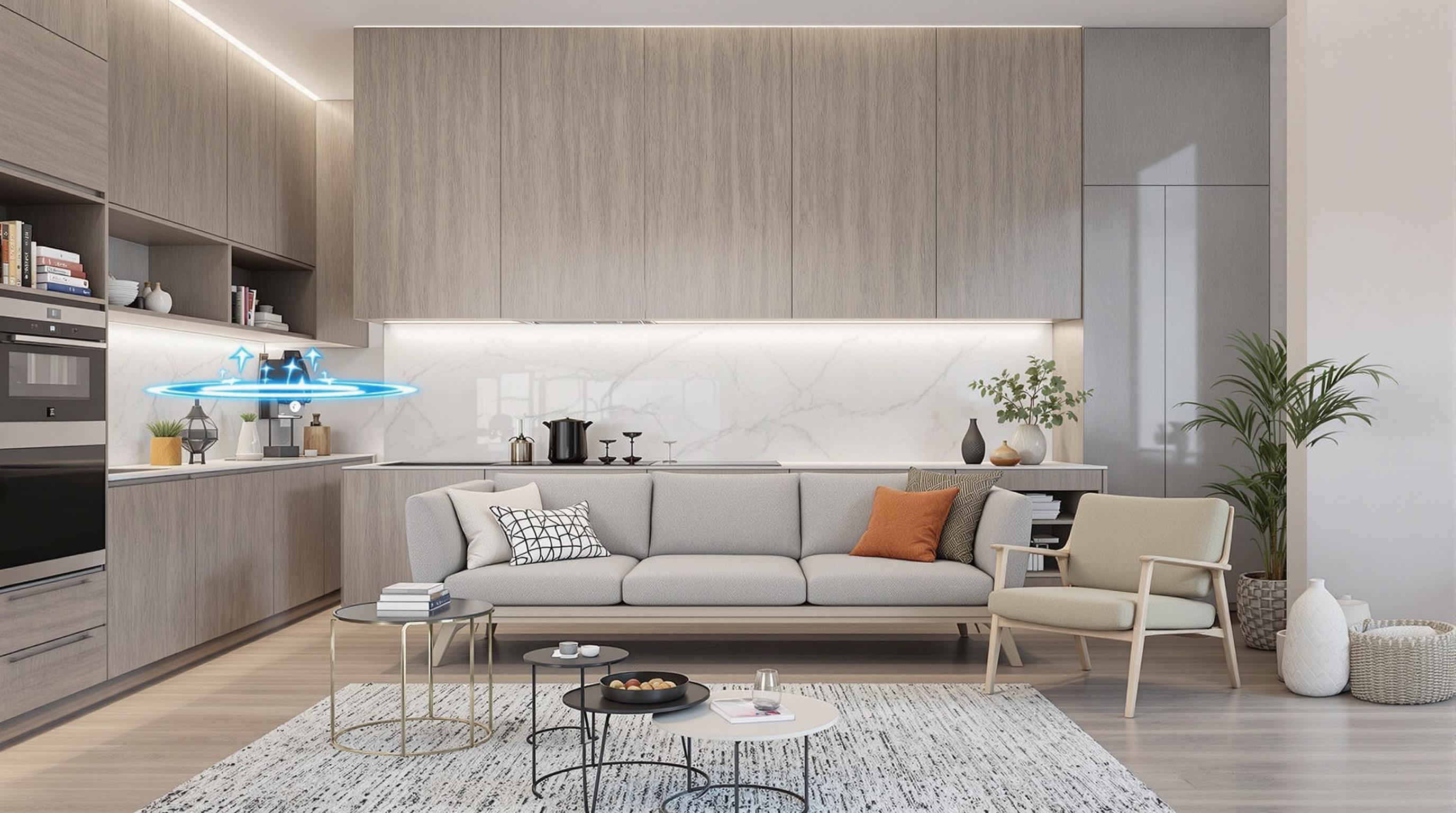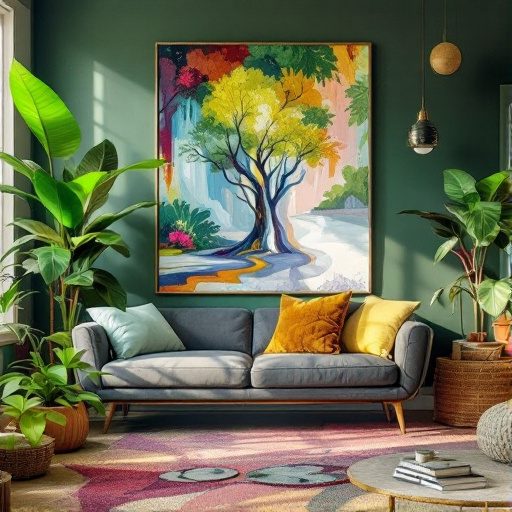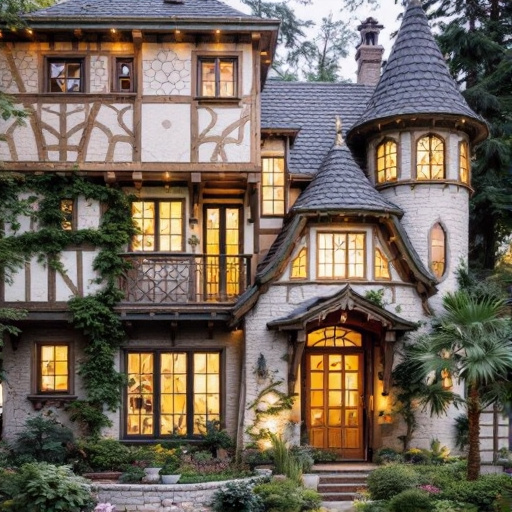Featured Articles
- "Decoding the Mystery: How Folklore Influences Modern Home Designs in Unexpected Ways"
- Reimagining Ruins: How Abandoned Spaces Are Inspiring Modern Home Designs and Eco-Conscious Living
- Reimagining Spaces: How Biophilic Design Can Transform Mental Health in Your Home
- Reviving the Past: How Retro Futurism is Reshaping Modern Home Design with a Twist of Nostalgia
- Revolutionizing Spaces: How Biophilic Design is Transforming Urban Home Environments into Nature-Infused Sanctuaries
Reimagining Spaces: How Biophilic Design Can Transform Mental Health in Your Home
Reimagining Spaces: How Biophilic Design Can Transform Mental Health in Your Home
Incorporating biophilic design into your home can significantly enhance your mental health, promoting serenity and connection with nature within your everyday environment. This article explores the principles of biophilia, showcasing practical applications and their profound effects on your well-being.
The Essence of Biophilia
Biophilia, a term popularized by American biologist Edward O. Wilson, refers to the innate human inclination to seek connections with nature and other forms of life. It's not merely a buzzword in design; it embodies a philosophical outlook that suggests our well-being is intertwined with the natural world. The more we engage with nature, the more we thrive.
Why Does Mental Health Matter?
The World Health Organization states that around 1 in 4 people will experience a mental health issue at some point in their lives. With the increasing prevalence of stress, anxiety, and depression, finding ways to alleviate these afflictions is vital. Integrating nature into our living spaces might just be the remedy we need.
Connecting with Nature: The Science Behind It
Studies suggest that spending time in natural environments can reduce cortisol levels, lower blood pressure, and improve overall mood (Kaplan, 1995). For instance, a 2015 study published in the Journal of Environmental Psychology found that participants who spent just a few minutes in nature exhibited a significant boost in mood and a decrease in anxiety levels compared to those who stayed indoors.
Real-Life Applications: Bringing the Outdoors In
Now that we understand the importance of biophilia let’s delve into practical applications. A lovely example is the addition of indoor plants. Not only do they improve air quality, but they also enhance focus and creativity. According to a study conducted by NASA, certain houseplants can filter harmful toxins from the air, improving the healthiness of your indoor environment.
A Case Study: The Healing Power of Nature Views
Let's take a look at the renowned case of the Texas A&M University’s Medical School, which integrated biophilic design principles into its architecture. By incorporating large windows that overlook serene green landscapes, the environment promotes healing and reduces stress for both patients and staff. This case study provides concrete evidence of how simply having a view of nature can transform mental health outcomes.
Biophilic Design Elements You Can Incorporate
Feeling inspired? Here’s a breakdown of elements you can easily integrate into your home:
- Natural Light: Ensure your space is well-lit with natural sunlight. Skylights or bigger windows can help reduce reliance on artificial lighting.
- Indoor Plants: Add a variety of plants that thrive indoors. Some great options include Snake plants, spider plants, and peace lilies.
- Natural Materials: Use materials like wood, stone, and clay in your furnishings and decor to bring organic textures into your living space.
- Water Features: Consider incorporating a small indoor fountain or aquarium to mimic the calming effect of natural water bodies.
- Natural Colors: Utilize a palette that reflects the colors of nature—think greens, browns, and shades of blue to give a serene feel.
- Views of Nature: If possible, arrange your living space to ensure scenes of nature are visible from windows or patios.
A Personal Reflection: My Journey with Biophilic Design
As a 24-year-old living in a bustling city, my apartment felt more like a cage than a sanctuary. After researching the concept of biophilic design, I took it upon myself to transform my space. I added a few ferns, placed a mini-waterfall in my corner, and painted my walls in calming earth tones. The results were transformative; I felt more relaxed, focused, and productive in my workspace—a direct reflection of how revitalizing nature can be.
Statistics That Speak Volumes
According to research conducted by the University of Minnesota, rooms with plants can increase concentration and productivity by more than 15%. With statistics like these, why wouldn't you want to surround yourself with nature?
Worrying About Maintenance? You’re Not Alone!
Now, if you’re thinking, “But I don’t have a green thumb,” fear not! Many plants require minimal care. For example, succulents and snake plants can survive on little water and still thrive. There are also online plant-care communities where you can share tips and seek advice if you run into trouble.
The Healing Environments Project
The Healing Environments project is an exemplary case where biophilic design was implemented in healthcare settings, focusing on how environments can be reimagined to support recovery and well-being. Conducted by researchers at the University of New Mexico, the project demonstrated that healing gardens in hospitals can significantly reduce patient stress and improve recovery times.
Redesigning Your Outdoor Spaces
Don't restrict the benefits of biophilic design to just indoors! Your outdoor spaces can feature natural elements that bring joy and relaxation. Creating a garden space with native plants not only supports local wildlife but also requires less maintenance, making it a sustainable choice.
How to Create a Calming Outdoor Oasis
Transform your outdoor area into a calming sanctuary where you can recharge your mental batteries. Here are some tips to get you started:
- Plant Perennials: They come back year after year and require less maintenance, allowing you to enjoy their beauty without the hassle of replanting.
- Use Natural Stone Paths: Pathways made with stones or gravel bring texture and can guide the focus to different areas of your garden.
- Install Benches or Hammocks: Create a cozy nook for reading, meditation, or simply enjoying your surroundings.
- Include Bird Feeders: Attracting birds can create a lively atmosphere and connect you with nature.
Biophilia: More Than Just Design
Biophilia transcends aesthetic value; it could be seen as a necessity. As humans evolve in modern urban settings, our yearning for nature grows stronger. The concept of biophilic design serves not only as a way to enhance spaces but also as a pathway toward improved mental health and well-being.
Final Thoughts: Embrace the Change
The power of biophilic design lies not only in transforming your home but in transforming your life. By integrating natural elements into our living spaces, we not only beautify our environments but also nourish our minds and hearts. So, don’t hesitate—take a step today toward creating a space that calms you, inspires you, and connects you with the beautiful world outside.
To wrap it up with a splash of humor, just remember: if plants could talk, you’d enjoy listening to their “leafy” gossip while sipping tea in your newly transformed space. Here's to thriving in our homes, one houseplant at a time!




